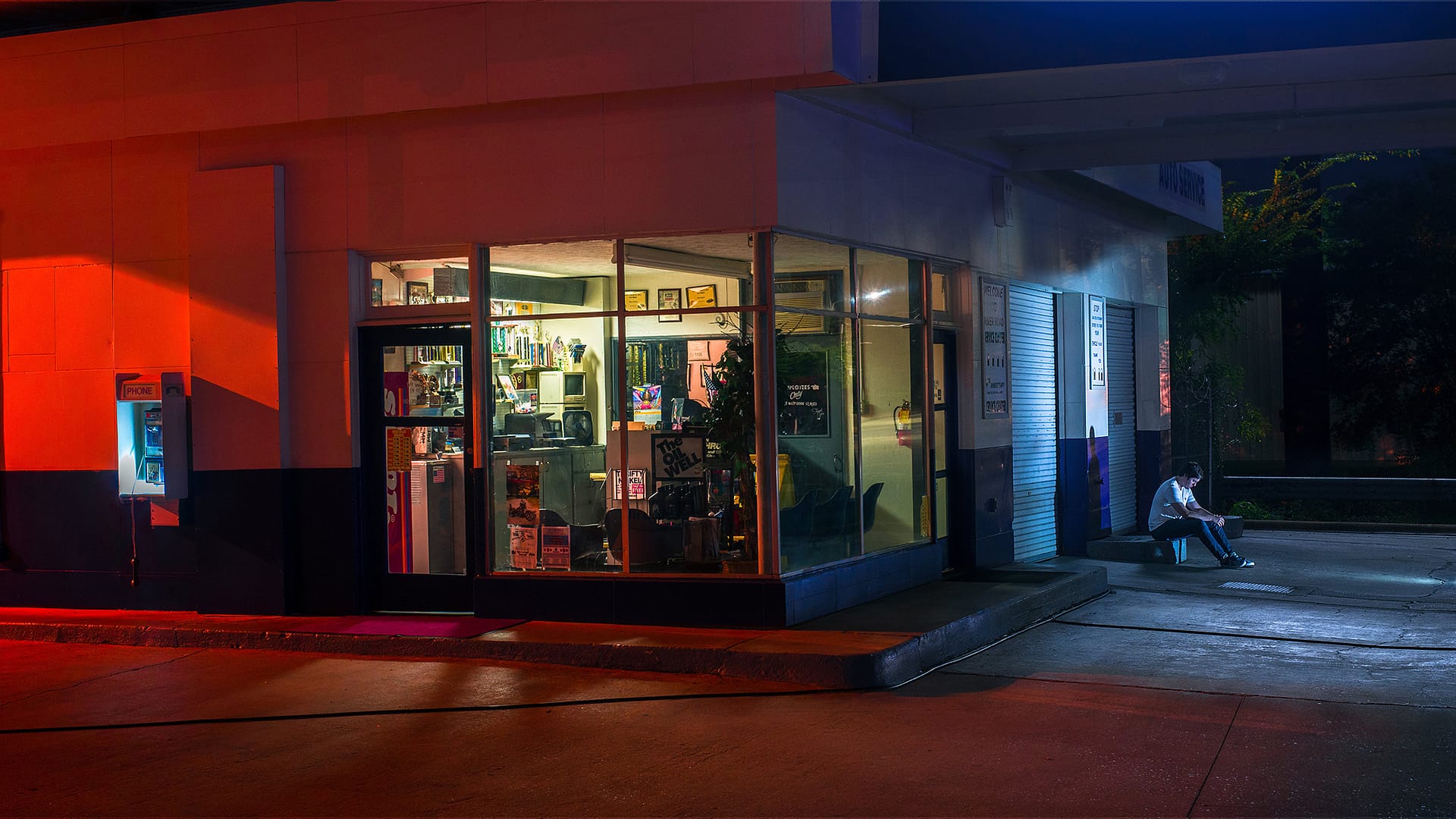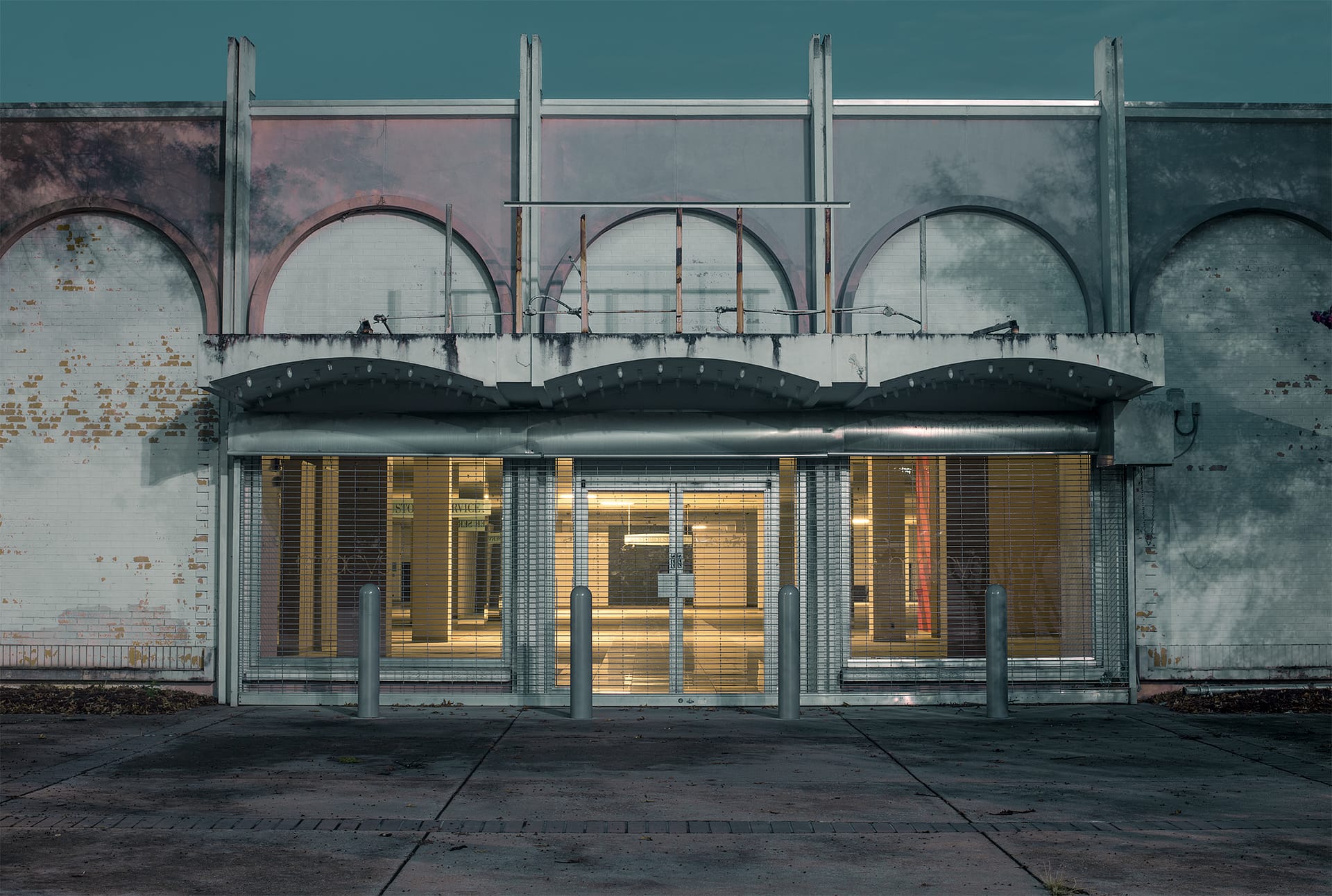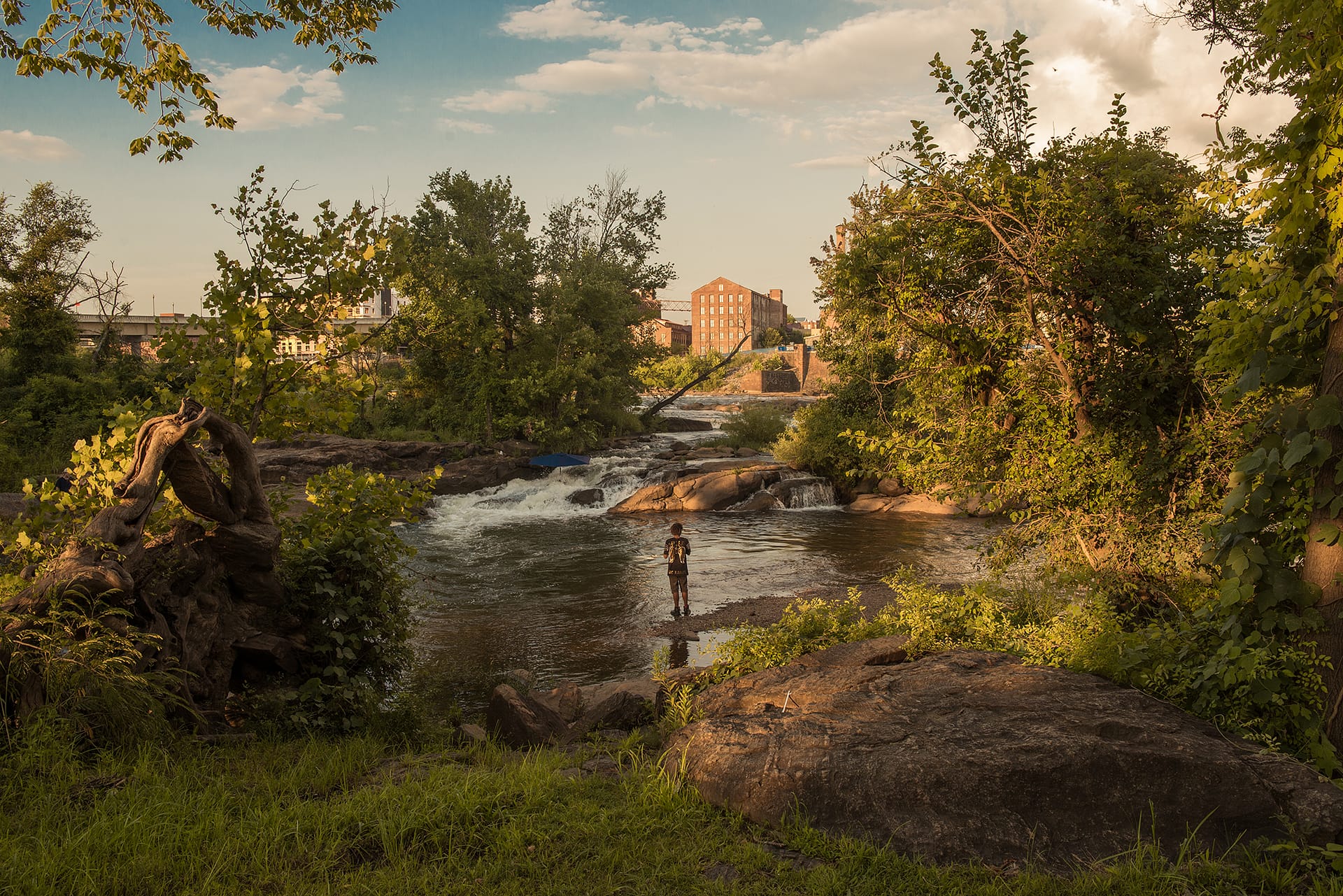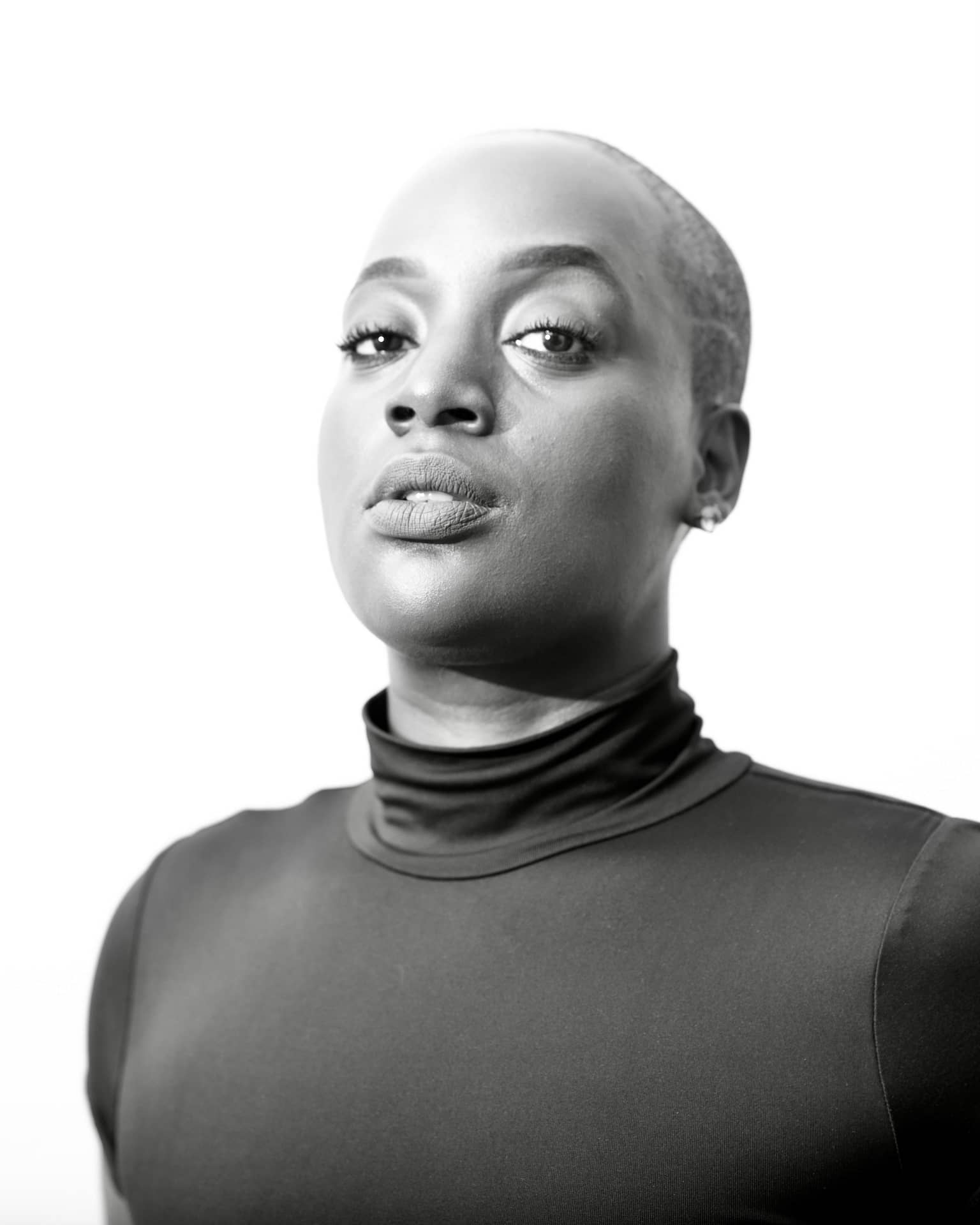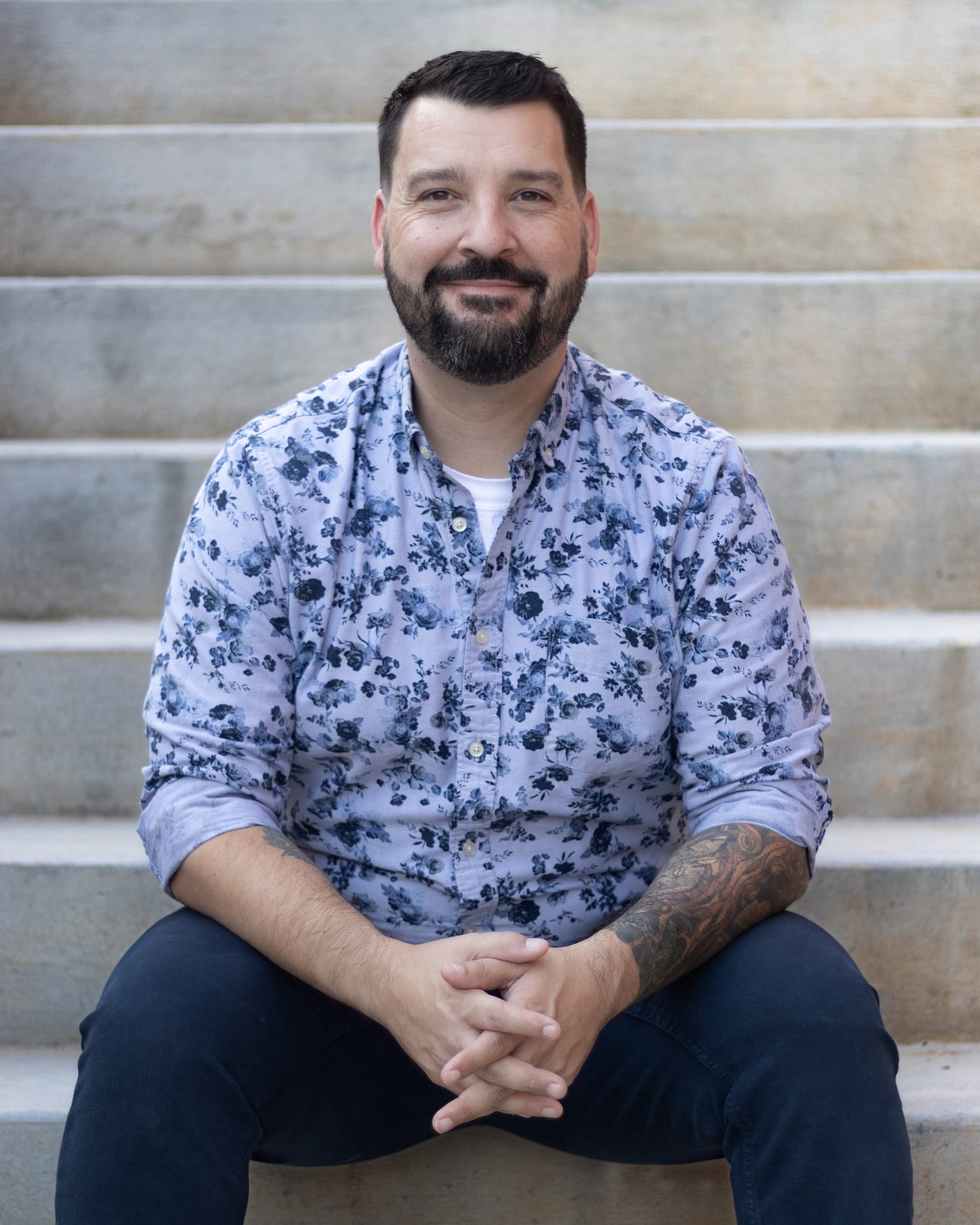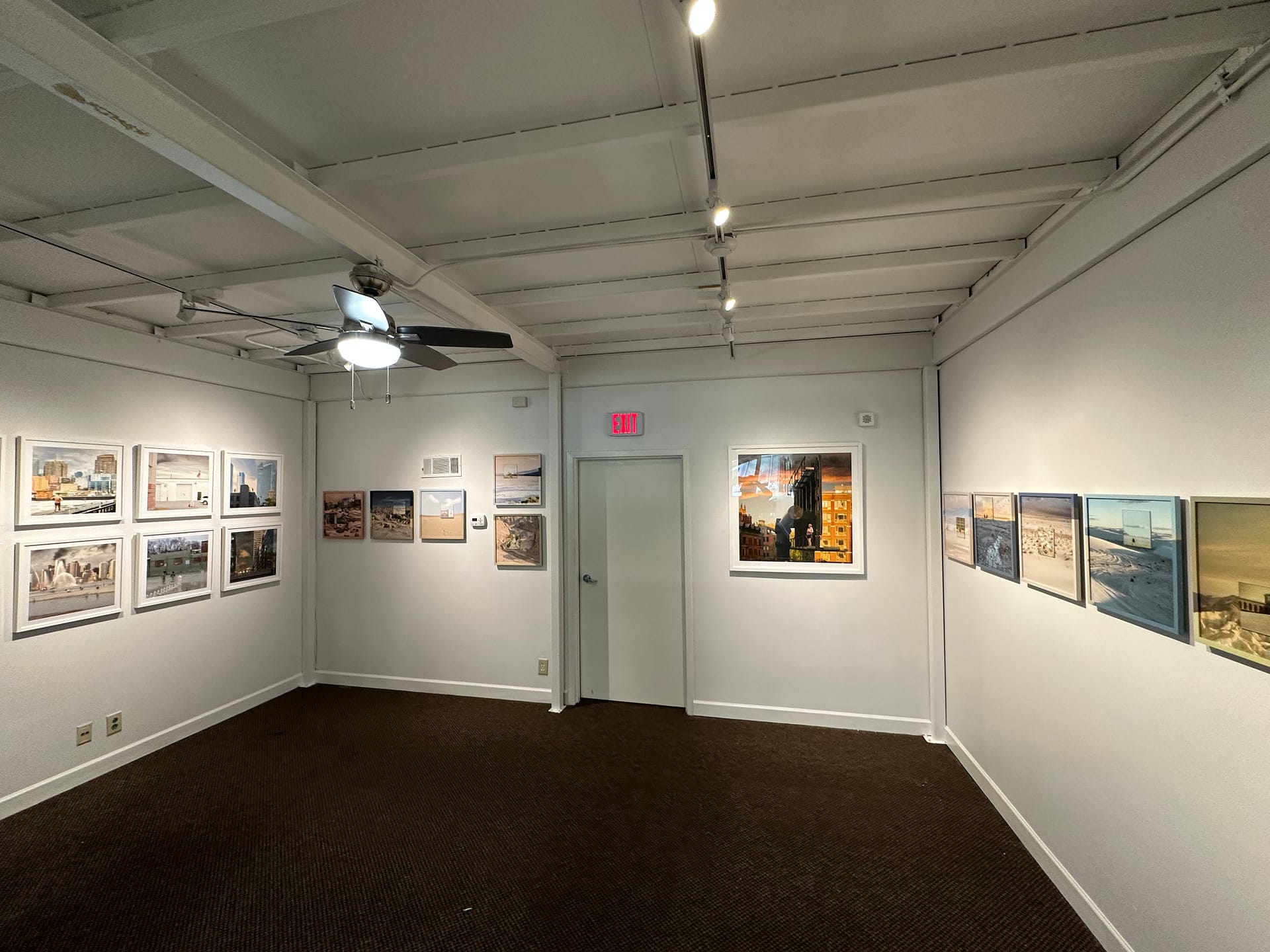For our exhibition Student Prize 2018, APG’s Esther Griffin will be talking with the artists about their work and their upcoming career as a photographer. Student Prize is a juried exhibition for photography students who were nominated by their faculties. From all nominees, 4 winning artists were chosen, whose work will be on view in the group show. First up is Andrew Turner.
Turner was born and raised in Columbus, Georgia and is currently finishing his BFA at Columbus State University. His work has been in several group and solo exhibitions at the University as well as galleries in the Columbus area. He won “Best of Show” in the 2018 Student Juried Exhibition at CSU.
The opening reception for Student Prize 2018 is Friday, Dec. 7, from 6-9pm. There will be an Artist Talk on Saturday, Dec. 8, at 1 pm.
Your exhibition contains two projects that are linked together by cinematic aesthetics and the concepts of fear, loneliness and confusion. Can you explain these aspects of your work?
The psychological concepts of my work originate from my childhood. I was diagnosed with cancer during my formative years as a child, which in turn changed my perspective of the world. There is a whirlwind of emotions flying through your head at 12 to hear that your life may be over for no fault of your own. There is no answer for your situation, you just have to deal with the matter presented. I became extremely self-conscious due to my appearance undergoing treatment. I also began to feel quite alone in my position, there weren’t many kids my age I could relate too. It wasn’t until much later in college that I began to examine how cancer impacted my life and how much it influenced my creative process. Each image represents some aspect of my emotional acceptance of what happened to me. My compositions often contain one central person in an uneasy, unclear situation. This person is left alone to overcome the battle or obstacle presented; very similar to how I was thrust into the battle of fighting cancer. I was very fearful of what was going to happen. I was under the best medical care I could be, however, there was still this element of the unknown. That element has stuck with me and can be seen predominantly in the image “Forsaken: The Darkness,” alluding in the background awaiting the unknown, the same unknown that I felt awaiting me.
When it comes to film you are inspired by Stanley Kubrick, Wes Anderson and Roger Deakins. What about their work is appealing to you?
I am immediately drawn to the compositional elements that Kubrick, Anderson and Deakins employ within their films. Particularly with Anderson I admire his sense of space, everything presented within the frame is considered. His films present a bright visual journey, which leaves me to examine every detail presented how it affects the narrative. I began to examine Deakins’ work rather late actually. It was his use of color and light that I admired in Blade Runner 2049. There are so many aspects of that film I admire, however the most influential to my work can be seen in the depiction of a post-apocalyptic Las Vegas. There is a particular section of that film where Ryan Gosling’s character travels to what is left of the city of Las Vegas. There is an orange cast that consumes the city, which presents a very monochromatic look. The use of color within that sequence helps to further isolate the city from reality. I employed this visual style within the photograph “Elsewhere.” Similar to the city of Las Vegas this scene depicts a joyful and exciting moment, however there is a reduction of interaction and separation from reality that the characters have within the environment that presents itself. Kubrick’s approach to the cinematic medium has greatly impacted how I capture an image. His extreme attention to detail combined with his respect for the art of film speak to me. Watching The Shining I became immediately connected to the mood of the film. His use of subtle elemental clues to the narrative, while also presenting a feast for the eyes had me hooked. Often, I draw back to the mood of that film and use it as a creative inspiration for my work.
You are heavily influenced by film, so why the choice for photography?
That’s a great question. Eventually I do plan to take my skill set and apply to the world of filmmaking. I plan to one day – in some shape or form – be involved behind a camera for a film. For now, I love the challenge of creating a narrative within the single image. It all stems back for me when I was introduced to the work of photographer Gregory Crewdson. His way of image making completely changed the way I thought a photo could function. His work is very cinematic in nature and it was his influence that got me to place subtle clues and hints within the photo to guide the viewer to a narrative. I believe there can be a marriage of the two mediums. There is an inherent difficulty in being able to tell a full story within a single image that I am drawn to. Furthermore, being able to take a picture like “Divine” is crucial in my creative process. “Divine” is a picture that I never planned to make, yet it’s arguably one of my strongest works. I just happened to capture that man at the perfect moment and in the perfect spot just exploring with my camera. I feel I wouldn’t be able to have such creative freedom to explore like I did if I was only doing film. Even if I end up in film, I will always be taking photographs.
You intensely work with color to set the mood in your photos, a great example is “Divergence.” Do you create a plan beforehand or do you work with the environment you are presented with when you go out and about?
It’s a mix of both really, some environments I am more familiar with than others. So, I know how the color will be presented more within one than the other. Furthermore, using a digital camera I can immediately see how the colors present themselves. I then will be able to know if and how I can adjust them to create the mood I desire. I am very particular about each color. I will go in an adjust every color until I receive the desired result. I will finish by split toning the image, meaning I will adjust the hue of the highlights and the hue of the shadows, which helps extremely to add to the mood I create. In the case of “Divergence,” it was a location that I came back to multiple times after taking the initial photo. The area was filled with this incredible division of color that I just had to bring out more. However, not all of my images are heavily adjusted; in the case of “Divine,” I slightly brought up the saturation and contrast, the light that day was just perfect.
Do you collect art yourself?
My room and studio are filled with my various photos over the years. If I were to buy some works and had an unlimited budget, I would definitely get a Crewdson, Philip diCorcia, and Stephen Shore to name a few. I do however collect many books of stills from films, and I have a gigantic book on Kubrick. I use them to research and dissect the elements that I can employ in my work.

